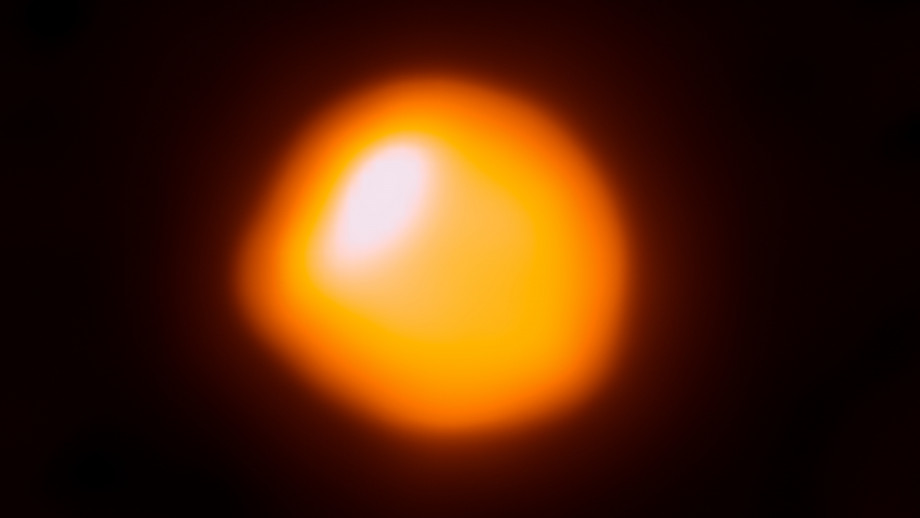Oct 19 2020
A new study by an international group of researchers reports that until the giant red star Betelgeuse might take another 100,000 years to die with a fiery explosion.

Image Credit: ALMA (ESO/NAOJ/NRAO)/E. O’Gorman/P. Kervella.
Led by Dr. Meridith Joyce from The Australian National University (ANU), the study not just offers Betelgeuse a new lease on life but also indicates that it is smaller and closer to Earth than considered earlier.
According to Dr. Joyce, the supergiant, which forms part of the Orion constellation, has attracted the attention of scientists for a long time. However, in recent times, its behavior has been very strange.
It’s normally one of the brightest stars in the sky, but we’ve observed two drops in the brightness of Betelgeuse since late 2019. This prompted speculation it could be about to explode. But our study offers a different explanation. We know the first dimming event involved a dust cloud. We found the second smaller event was likely due to the pulsations of the star.
Dr Meridith Joyce, The Australian National University
By using hydrodynamic and seismic modeling, the team could gain more insights into the physics that drives such pulsations—and clearly understand which phase of its life Betelgeuse is now in.
Dr. Shing-Chi Leung, co-author of the study from The University of Tokyo, the analysis “confirmed that pressure waves—essentially, sound waves—were the cause of Betelgeuse’s pulsation.”
“It’s burning helium in its core at the moment, which means it’s nowhere near exploding. We could be looking at around 100,000 years before an explosion happens,” added Dr Joyce said.
According to Dr. László Molnár, study co-author from the Konkoly Observatory in Budapest, the study also showed how big Betelgeuse is, as well as its distance from Earth.
The actual physical size of Betelgeuse has been a bit of a mystery—earlier studies suggested it could be bigger than the orbit of Jupiter. Our results say Betelgeuse only extends out to two thirds of that, with a radius 750 times the radius of the sun.
Dr László Molnár, Study Co-Author, Konkoly Observatory
Dr. Molnár continued, “Once we had the physical size of the star, we were able to determine the distance from Earth. Our results show it’s a mere 530 light years from us—25 percent closer than previous thought.”
The bright is that Betelgeuse is still located very far from Earth for the final explosion to have a considerable effect here.
It’s still a really big deal when a supernova goes off. And this is our closest candidate. It gives us a rare opportunity to study what happens to stars like this before they explode.
Dr Meridith Joyce, The Australian National University
The research was financially supported by The Kavli Institute for the Physics and Mathematics of the Universe (WPI), The University of Tokyo, and promoted by the ANU Distinguished Visitor’s program. Researchers from the United States, Hong Kong, Hungary, the United Kingdom, Japan, and Australia contributed to this study.
Journal Reference:
Joyce, M., et al. (2020) Standing on the Shoulders of Giants: New Mass and Distance Estimates for Betelgeuse through Combined Evolutionary, Asteroseismic, and Hydrodynamic Simulations with MESA. The Astrophysical Journal. doi.org/10.3847/1538-4357/abb8db.